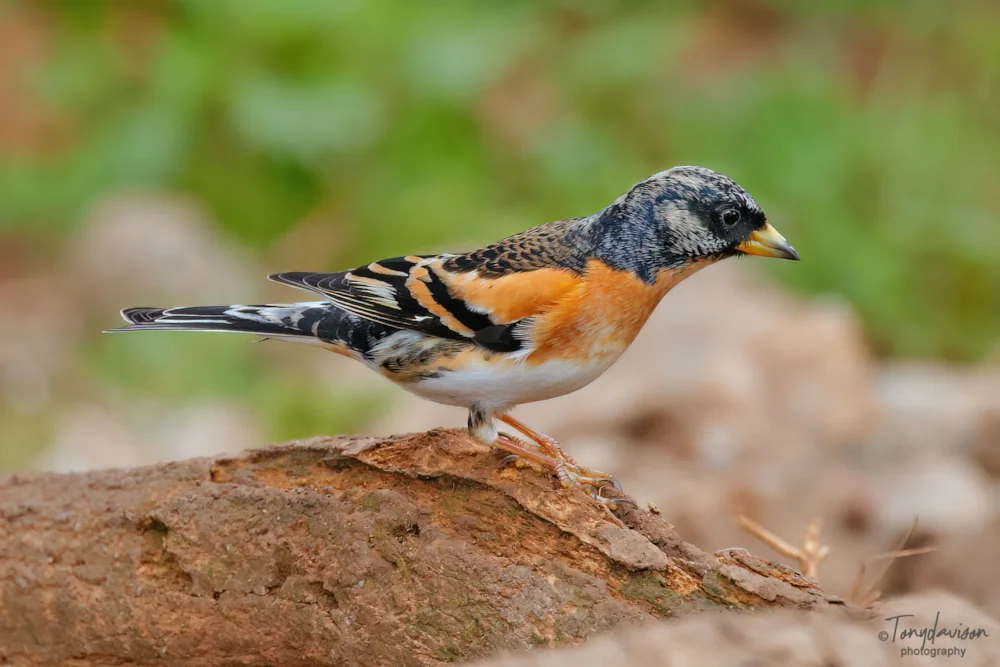Irish Garden Bird Survey gets underway
BirdWatch Ireland's Irish Garden Bird Survey has returned for the 34th consecutive winter.
The citizen science project got underway on 28 November and runs until the end of February 2023.
The survey is very simple and asks people to spend a short amount of time each week watching their garden birds and recording what they see. It plays an important role in tracking the fortunes of some of Ireland's best-loved wildlife.
Last winter there was a big increase in the number of Bramblings in Irish gardens, with 4% of gardens in 21 counties hosting at least one of these Scandinavian migrants hiding among their Chaffinches. Brian Burke, who co-ordinates the survey for BirdWatch Ireland, explained: "There was a noticeable spike in their numbers in mid-January, corresponding with the lowest recorded temperatures of the winter, highlighting just how important it is to put out food and water in advance of frost or snow!"

Brambling was numerous in Irish gardens last winter (Tony Davison).
Other notable rarities include the invasive Ring-necked Parakeet seen in a select few Dublin gardens and a Rustic Bunting in a garden in Co Down. Rustic Buntings nest in woodlands in eastern Scandinavia and Siberia and spend the winter in South-East Asia, and this was only the 23rd record of the species in Ireland. A Mediterranean Gull in a Dublin garden represented only the third record of the species in the Irish Garden Bird Survey.
"Taking part in the survey is really easy, and while it doesn't require a huge commitment, it definitely provides people with extra motivation to keep an even closer eye on their garden birds, and that's when you might spot something new," said Mr Burke. "It might be something rare at a national level, or something common but that you've never seen in your garden before. There's excitement either way!"
Robin was seen in the highest proportion of gardens last winter (>99%), followed by Blackbird (>97%) and Blue Tit (>96%), with Magpie moving up to fourth place (90%). House Sparrow was the most numerous birds recorded (average count of 9-10 individuals per garden), followed by Common Starling and Goldfinch (8-9 per garden).
The native hibernicus subspecies of Coal Tit fell to its worst ranking in two decades (11th place, <80% of gardens) after a series of poor years. Another species showing significant decreases was Song Thrush (down 10%, from 13th to 17th), which may have suffered high nest losses because of the cold start to the summer the previous year. Pied Wagtail also declined by 10%.

Robin was the most prevalent species in Irish gardens in winter 2021-22 (Peter Miles).
Notable increases include Jay, which was recorded in more than 10% of gardens for the first time ever, reflecting a widespread increase in the Irish population. More common members of the crow family, such as Jackdaw, Rook and Hooded Crow all increased last year, as did all three of the most common pigeon species: Woodpigeon, Collared Dove and Feral Pigeon. Great Spotted Woodpecker, which first began its colonisation of Ireland around 2005, was recorded in 5% of Irish gardens across 21 counties, and continues to increase across the country, favouring peanut feeders in the winter.
BirdWatch Ireland also issued a plea for members of the public to ensure that their garden bird feeders are kept clean this winter. Although the risk of avian flu in gardens remains low, the main risk to garden birds continues to be the trichomonas parasite, which has been infecting finches for over 15 years now. Greenfinches were present in fewer than half of gardens last winter, down from over 90% of gardens in the early 2000s. Also, Chaffinches in urban areas are declining faster than those in rural parts of the country, apparently because there are more feeders in urban gardens where they pick up the trichomonosis disease. "If you're putting out feeders, you also have a responsibility to clean them thoroughly at least once a week to ensure the costs don't outweigh the benefits to the birds," explained Mr Burke.

